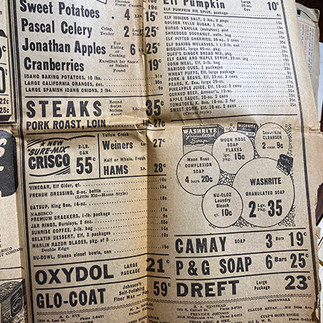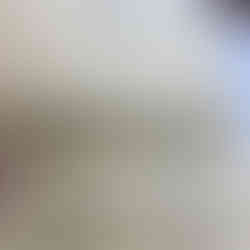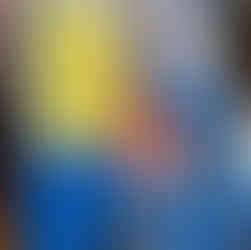Inside the Time Capsule of a Hundred Year Old Cookbook
- Robin Brown
- May 11, 2024
- 6 min read
Updated: May 12, 2024
I buy and sell a lot of vintage cookbooks. I am always on the lookout for them. They sell well in my booths and they are fun to look through! Recently, I was at a garage sale and found a few vintage cookbooks. I found a Betty Crocker cookbook, the old standard Better Homes and Gardens red checkered cookbook (both in great shape!)...
and this little thing. To be honest, I almost left it behind. The Farmer’s Guide cookbooks (created and published in Huntington, Indiana) always sell well for me, but this one wasn’t in good shape and it was stuffed full, of well—stuff! The cookbooks were only a quarter so I went ahead and added it to my pile. I thought I would get 25 cents worth of entertainment by digging into the “stuff” crammed in there. Little did I know, I was about to open a time capsule and embark on a journey through time.
I carefully cut the strings binding the book to release the treasures inside. This particular edition was from 1927.

I often find things in old cookbooks, hand written recipes or old newspaper clippings with a new recipe to try. Turning the fragile pages, I was transported to a culinary world far removed from the fast-paced digital age. The first thing that struck me was the unmistakable scent of history—musty yet oddly comforting, like the aroma of a grandmother's kitchen. Each page seemed to whisper stories of generations past immortalized in ink. What truly set this cookbook apart, however, were the sheer number handwritten notes scattered throughout its pages. Tucked between recipes for hearty stews and decadent desserts were personal anecdotes, scribbled in faded ink and accompanied by smudged fingerprints—a testament to the countless hands that had lovingly contributed to its creation.
The notes were written on every type of paper imaginable, old envelopes, note paper, receipts, anything handy that was available to share a treasured recipe.
One such note, penned in elegant script, caught my eye: "Mrs Cox's Cake."

Mrs. Cox's recipe is below.
Mrs. Cox's Cake
1 1/2 cup of sugar
2/3 cup of Lard or Butter
Pinch of salt when using Lard
2 1/2 cups of Flour
1 cup of Walnut Meals
Whites of 2 eggs
1 teaspoon of Cream of Tartar
1/2 teaspoon soda
2/3 cups of Sweet Milk
Put Cream of Tartar in the Flour. Use Swan's Down Cake Flour.
That's it. No size of pan noted, no temperature of the oven, and no instruction on how long to cook. So many of us would be lost with this recipe, including myself!
Flipping through the pages, I discovered a treasure trove of culinary delights—mostly desserts!—some familiar, others delightfully obscure. From time-honored classics like oatmeal raisin cookies to Economy Cake, each recipe offered a glimpse into the culinary zeitgeist of its time.
Ruby Seitmer Raisin Oatmeal Cookies
2 cups raisins
1 cup lard
2 1/2 cups sugar
2 eggs
3 cups milk
4 cups rolled oats
3 cups flour
2 teaspoons soda
1 teaspoon salt
3 teaspoons cinnamon
2 teaspoons ground cloves (1 teaspoon is enough–handwritten note to the side)
Cream lard and sugar, add eggs, beat together. Then add milk, mix raisins and oats together and add to mixture. Then add flour, soda, salt and spices. Beat well, drop by good teaspoonfull on greased and floured pan. Bake 12 minutes or until a good brown.
Economy Cake
1 cup sugar (gran)
Butter size of an egg
1 egg
1/4 cup cocoa
1 cup milk
2 cups flour
1 teaspon B Powder
1 scant teaspoon soda
Cream sugar & butter. Add egg. Beat well. Then scald cocoa.
But what truly captured my imagination were the handwritten recipes contributed by friends and loved ones—a testament to the communal nature of cooking. A large majority of the recipe's are attributed to the person providing the original recipe. So many classic names, Ruby, Hazel, Mildred, Bess—all names from a bygone era. From Ruby to Mildred, these cherished mementos spoke volumes about the bonds forged over shared meals and shared memories. Hazel also shared her recipe to make soap.
Hazel's Soap
3 1/2 lb lard
1 can lye (IGA) 13 oz
4 1/2 pint water
The way I make it and had good luck was I melted the lard and strained it & set the lard outdoors to cool. It was still liquid but almost cooled, then I put the can of lye over lard & then poured the water over the grease and lye. (Be sure to have 4 1/2 pin of water [room temperature]) & then stir until soap. Also I weighted the grease as soon as I got it melted.
There were also a multitude of newspaper clippings crammed into the book or pasted to blank pages in the cookbook.

The recipes are interesting, but I find the flip side of the clippings almost more interesting. It certainly gives you a glimpse of what life was like in the 1930s and 1940s.
The things I found most interesting (the paper was dated 1941 (pre Pearl Harbor attack).
24 lb sack of flour for 95 cents (It takes me so long to use a 5 lb bag of flour!)
Pork Loin 25 cents per pound
Beef Roast 18 cents per pound
Large package of Oxydol 21 cents
1 lb of butter 32 cents
So much fun to look at!
The ads are fun too.

Nabisco Shredded Wheat—still a favorite of mine!

Who knew there was such a thing as a peanut store? And you could get 2 lbs of peanuts for 29 cents!
The cookbook was also filled with dozens of news letters from WOWO AM Radio's "Modern Home Forum" with Host Jane Weston.
Of course I went down the rabbit hole and looked into the source of these newsletters from WOWO radio.
In the golden age of radio, when families gathered around crackling speakers to tune into their favorite programs, one show stood out as a beacon of warmth and homeliness: "Modern Home Forum" on WOWO AM Radio. Led by the charismatic host, Jane Weston, this program became a staple in households across America during the 1930 and 40s, offering a unique blend of entertainment, advice, and community spirit.
To understand the significance of "Modern Home Forum," it's essential to delve into the rich history of WOWO AM Radio itself. Founded in 1925 in Fort Wayne, Indiana, WOWO quickly rose to prominence as a powerhouse in the world of radio broadcasting, thanks to its strong signal and diverse programming. From music and news to talk shows and variety programs, WOWO captivated audiences far and wide, earning a reputation as a trusted companion in the home. WOWO was acquired by Westinghouse in 1936 and moved to new studios. The station now had more studios, and these had observation rooms that were tiered and could seat about fifty people. The studios themselves could hold 100 to 150 people for shows with live audiences. I have my own history with WOWO. It was the station my grandparents tuned in daily. After we moved to Indiana, it was the station that listed the school closings on wintry days.
One of the station's most beloved offerings was "Modern Home Forum," a program tailor-made for the homemakers of America. Launched in 1937, the show provided a platform for women to share tips, swap recipes, and discuss the joys and challenges of domestic life. Whether it was advice on gardening, home décor, or child-rearing, "Modern Home Forum" fostered a sense of camaraderie among its listeners, creating a virtual community bound by shared experiences. Listeners could also visit the studio and watch Jane Weston cook. A staff member would rove throughout the audience fielding questions.
At the heart of "Modern Home Forum" was its beloved host, Jane Weston. “Jane Weston,” which was an air name used by several different women at WOWO over the years in homage to Westinghouse, the station’s owner. The name was used on a number of Westinghouse stations for local homemaker programs. WOWO’s first Jane Weston was Dorothy Wright, who was born in West Lafayette, Indiana.
Throughout its run, "Modern Home Forum" tackled a wide range of topics, reflecting the evolving interests and concerns of its audience. From wartime rationing and Victory Gardens to post-war prosperity and the rise of convenience foods, the show provided a window into the everyday lives of American women, offering a mix of practical advice, heartwarming stories, and lighthearted entertainment.
As the 1940s gave way to the 1950s and television began to dominate the airwaves, the era of radio programming like "Modern Home Forum" gradually faded into memory.
The last category of items stuffed in the cookbook were little promotional pamphlets from various products, showcasing recipes utilizing the advertised products.
These are fun to look through and the graphics are amazing.
Well, that was the time capsule of the Farmer's Guide cookbook.

This is what the unleashed pile that was formerly compressed within the bindings of the cookbok looks like now. Still thinking about what to do with it all.

This is what the cookbook looks like now. Of course, I had to hold it closed. It won't stay that way on its own. I will put it under a stack of books to see if I can flatten it.
It was fun journey to dive into the cookbook and see what treasures it held. I think it was well worth the 25 cents of admission.
Thank you for reading my blog! If you would like to see more, follow me on Facebook, Instagram,and Pinterest! Just click on any of the social media links above! Thanks for following me on the junking adventures!












































































I used to love Cream Puffs, and my grandma's favorite cookies were Ginger Snaps. I still have many of her hand written recipes. And if you ever make it, I would even cheat and take a bite of Dream Cake, which is a recipe tucked within your treasures.
I also have a treasure trove cookbook filled with clippings and handwritten recipes, One of my favorite parts of The Amboy Quaker Cook Book is the advertising which is published within it's pages (from lawyers, lumber yards, a funeral director, livery stable, a homeopathic physician, to a jeweler who also filled prescriptions accurately, and much more). Published in 1907, there is no name in this precious book. Possibly it belonged my grandmother…
Loved it! My MILs cookbook was a treasure trove, too.